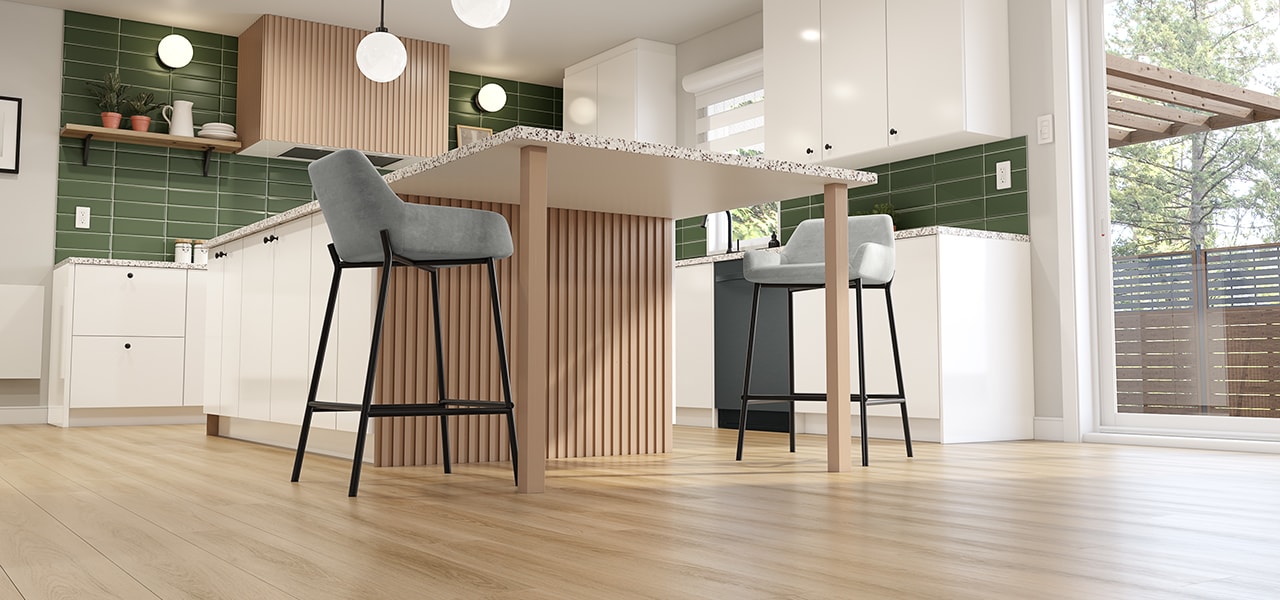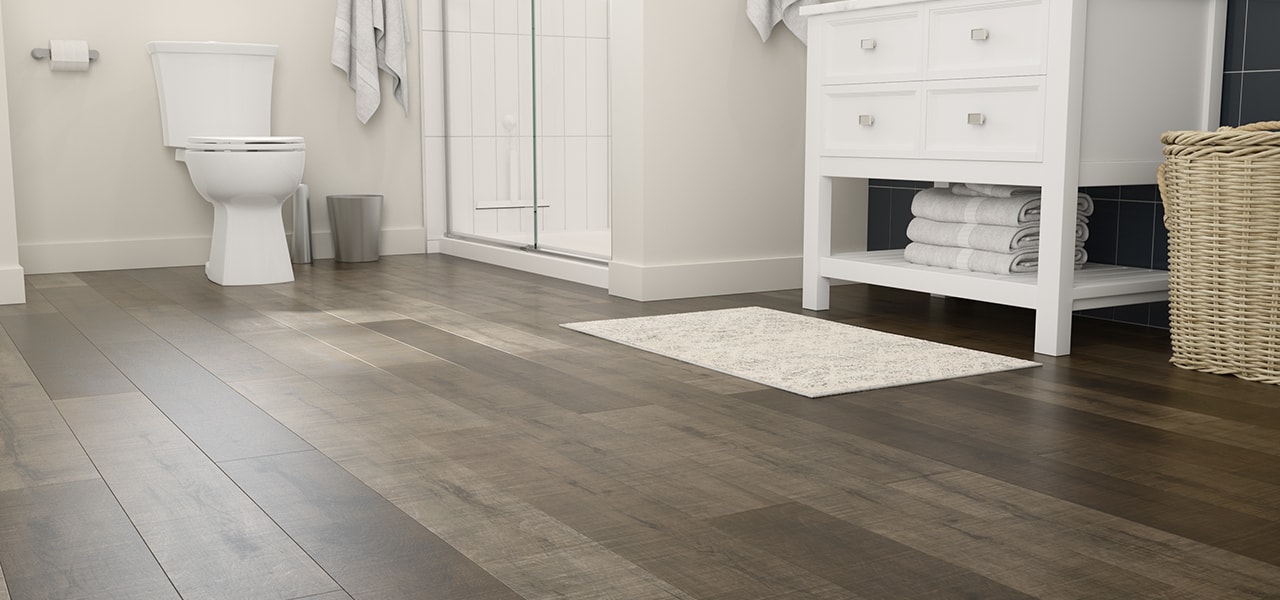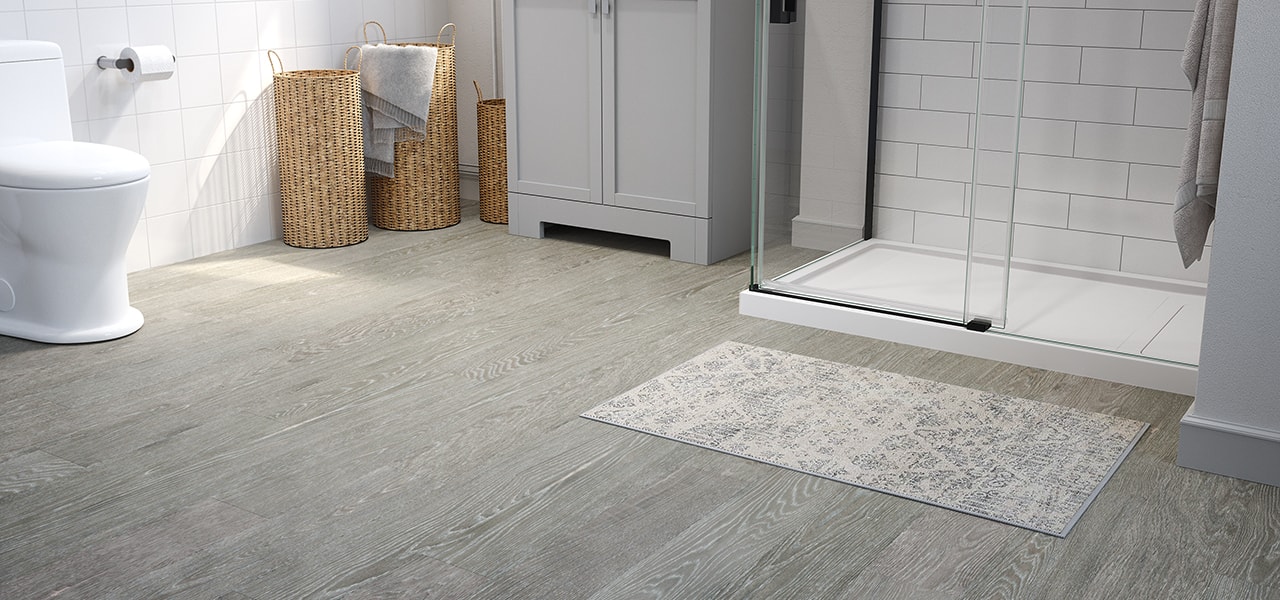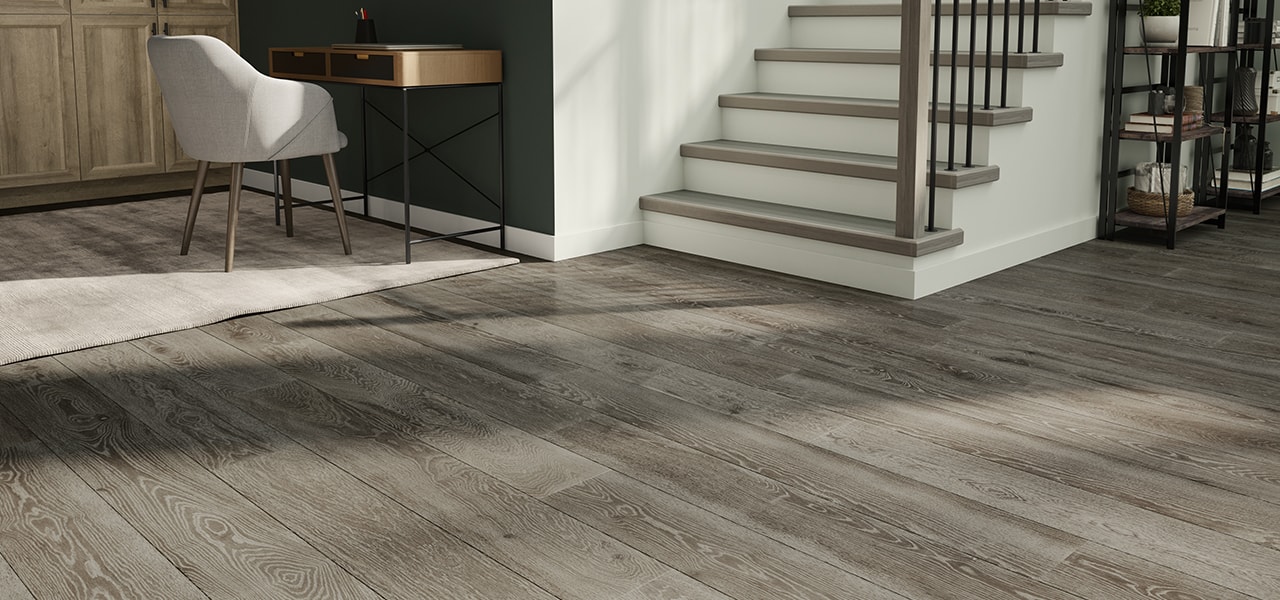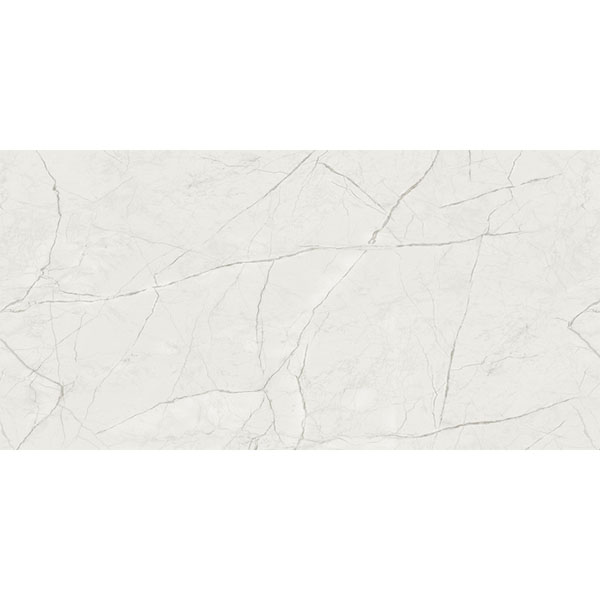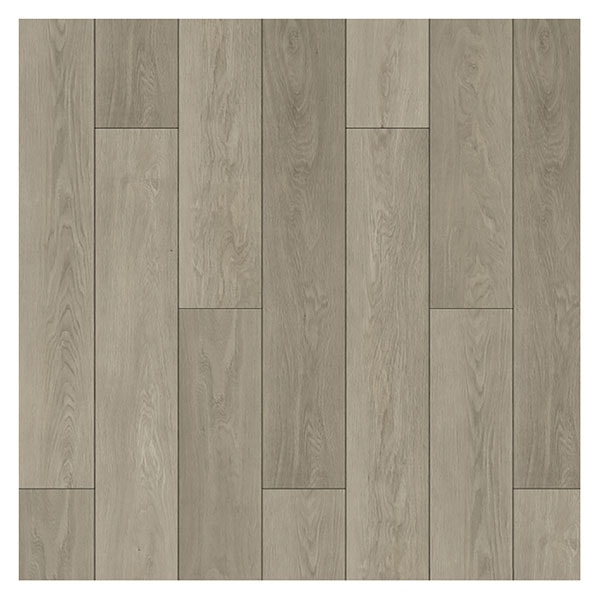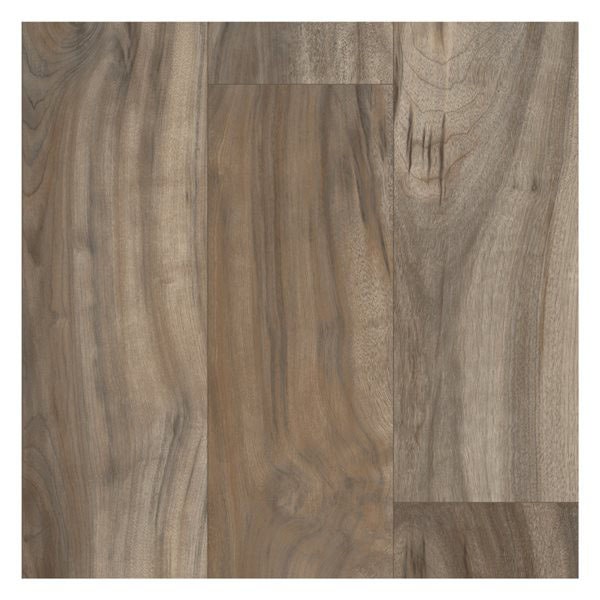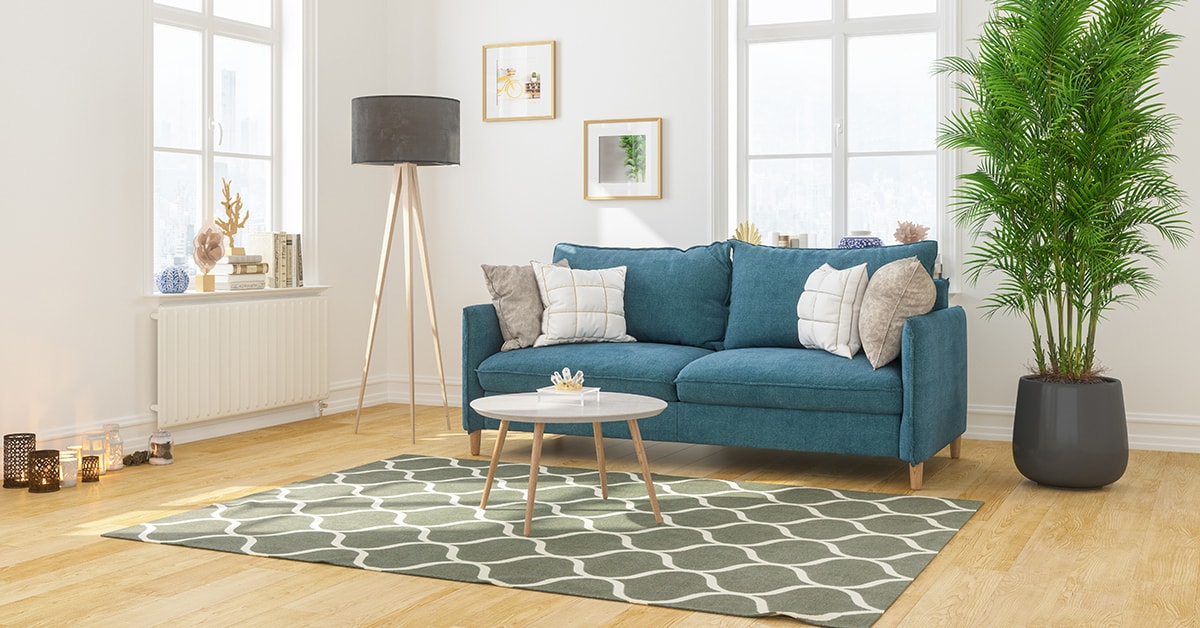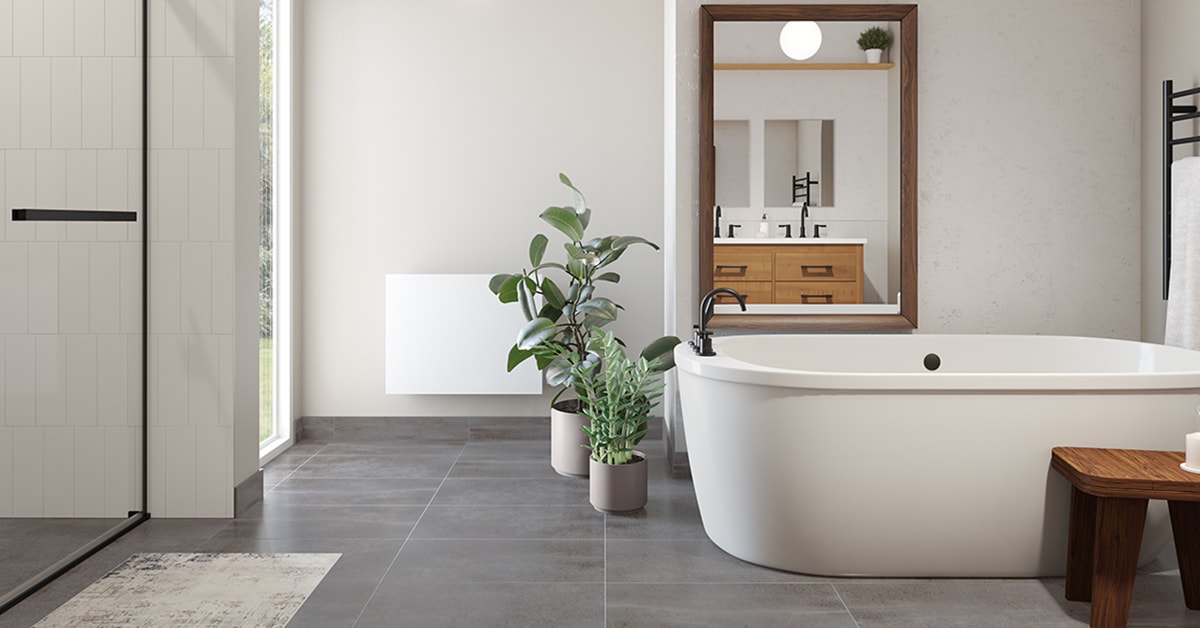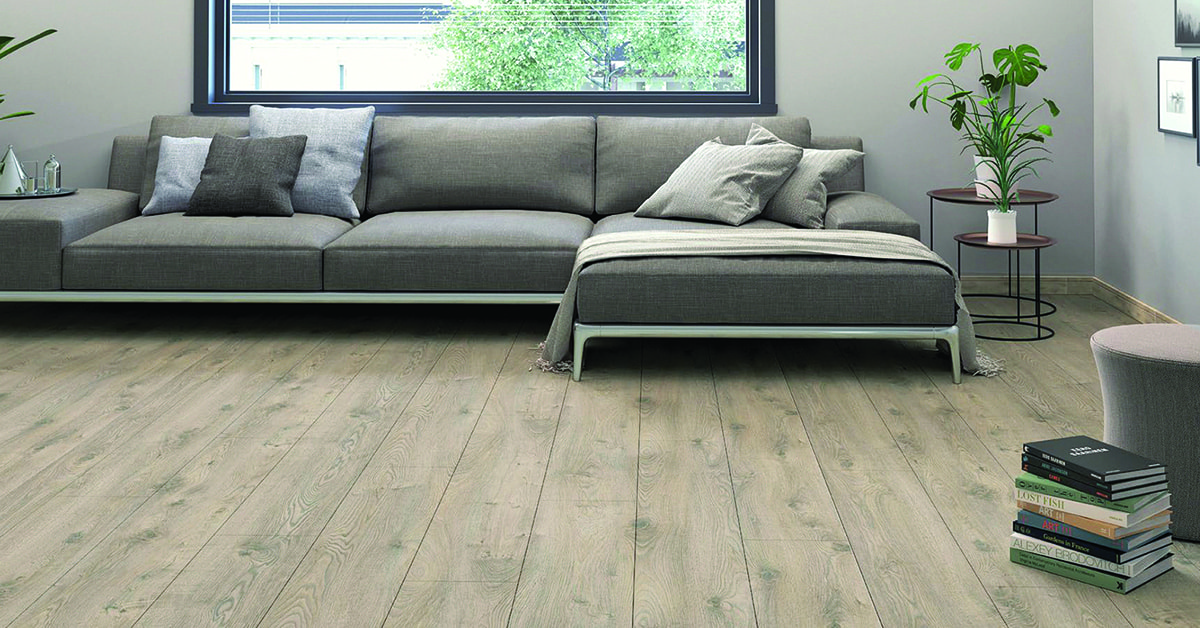Updated on July 14, 2023
Everything You Need to Know About Vinyl Flooring
Vinyl is not what it used to be! Vinyl flooring has evolved more than any other flooring in the last 10 years. It is now available as sheets or planks, and is an excellent choice for kitchen or bathroom floors.
Please click on the closed captioning icon at the bottom of the video player to watch with English subtitles.
Why Choose Vinyl Flooring for Your Home?
Pros and Cons of Vinyl Flooring
Vinyl is an attractive, versatile and durable floor covering option that can provide a look of luxury, but it has both advantages and disadvantages.
Pros
- Waterproof
- Easy to maintain
- Inexpensive
- Comes in a variety of textures, colours, and patterns
- Easy to install
- Durable
- Suitable for all rooms (even basements)
Cons
- Poor quality vinyl can turn yellow over time
- Can be difficult to repair
About Vinyl Flooring
Vinyl Tiles
Vinyl Planks
Vinyl Sheets
Different Finishes Available
There are 3 main types of vinyl flooring finishes to choose from:
- Vinyl no-wax, which is suitable for clean and light-traffic areas.
- Urethane, which is suitable for areas that see normal to heavy foot traffic, as it is resistant to scuff marks and scratches as well as easy to clean.
- Enhanced urethane, which is suitable for heavy traffic areas due to its high-quality, lustrous surface coating and excellent resistance to stains and scratches.
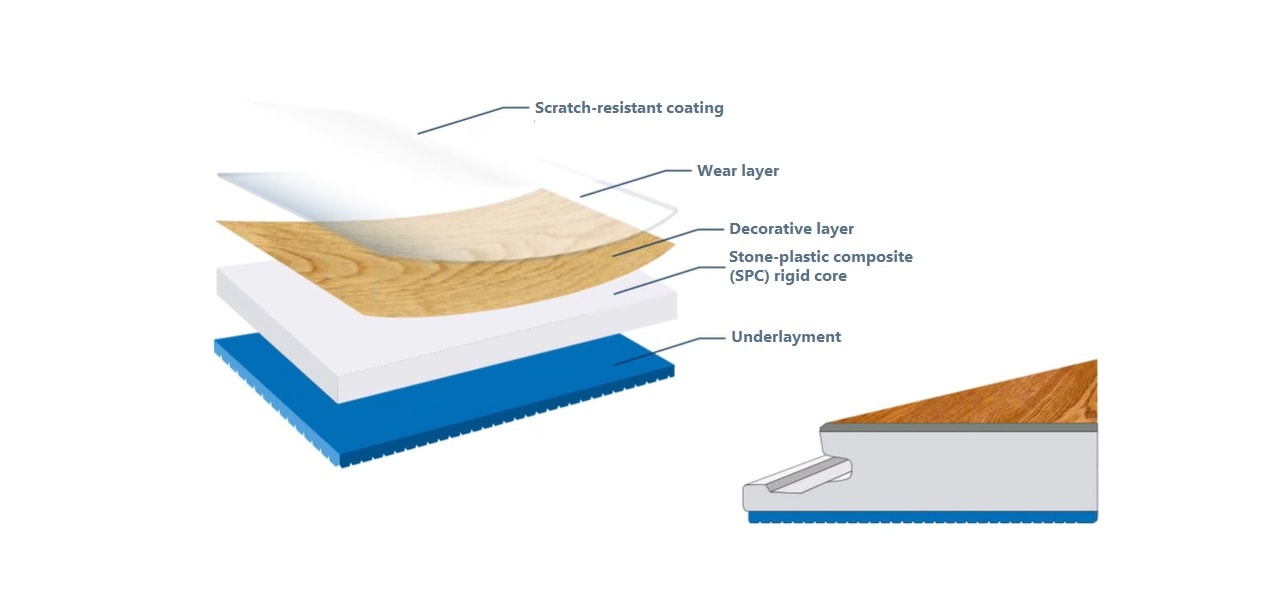
Other Aspects to Consider
- Thickness. Vinyl thickness ranges from 1.2 mm to 5 mm. The thicker the vinyl, the better it will hide subfloor imperfections.
- Underlayment. Options with built-in underlayment are available; otherwise, you'll need to purchase an underlayment in addition to the vinyl. To prevent stability and installation problems, make sure the vinyl underlayment thickness does not exceed 1.5 mm.
- Wear layer thickness. The thicker the wear layer, the more durable the flooring will be. The wear layer protects the floor from scratches and stains. It also makes cleaning easier.
- Edge finishing. Vinyl planks come with square or beveled edges. Beveled planks tend to produce a more realistic look.
- Type of installation. Planks are available with a multi-sided interlocking system (more resistant) or a single-sided click system (can move as products expand with temperature changes).
- Presence of phthalates. Make sure that the flooring you choose does not contain phthalates (these chemicals were previously used to make vinyl more flexible) so as not to affect the air quality of your home.
- Buy extra. Buy 10% more material than the ground surface to compensate for trimmings and wasted pieces.
- Subfloor condition. Check for moisture in the subfloor and make sure it is level within ¼" in a 10' radius.
- Subfloor type. Vinyl plank flooring can be installed above or below grade on most surfaces, including concrete and tile. However, do not install vinyl over carpet or laminate floors. Always refer to the manufacturer’s instructions.
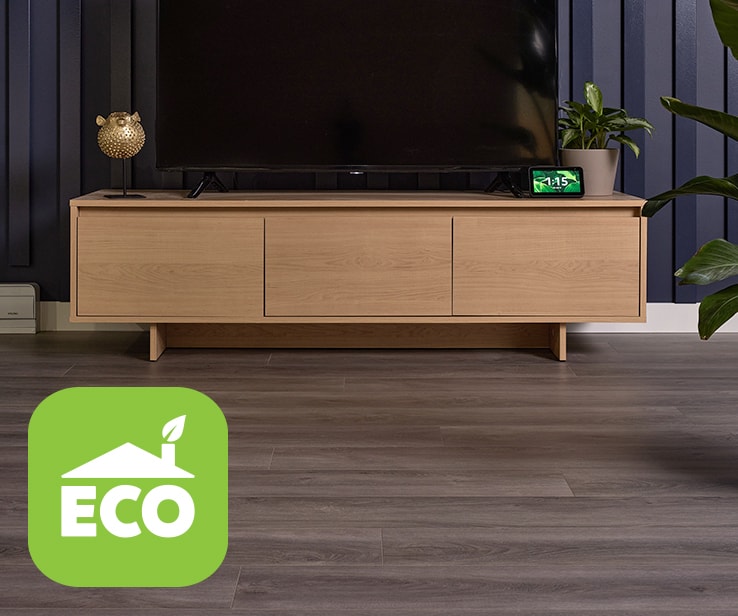
Opt for an Eco-Friendly Floor Covering
Pro Tip
Vinyl plank flooring does not require acclimatization if stored properly. All you have to do is store the planks horizontally in a dry place, away from sunlight.
Vinyl Flooring Maintenance
While vinyl flooring is very durable and easy to care for, it does still need some simple maintenance. All it takes is a few easy steps:
- Clean your flooring regularly. A simple routine sweep using a damp cloth will keep the vinyl looking like new. Clean up spills when they occur, but don’t worry about the floor becoming warped.
- Protect the flooring from furniture. The easiest way to prevent scratches on your new vinyl flooring is to use furniture pads on all tables, chairs, sofas, and other pieces of furniture sitting on top of it.
- Minimize sunlight exposure. The sun’s harsh UV rays can cause fading or damage to your vinyl flooring. Blinds, rugs, and floor mats can all offer good protection.









